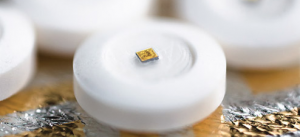Wearable Technology Devices and Apps Take Patient Care to the Street
 Wearable technology has evolved beyond fitness bracelets and now enables patients to receive healthcare services on the go.
Wearable technology has evolved beyond fitness bracelets and now enables patients to receive healthcare services on the go.
Similar to fitness bracelets and apps, sensors embedded in wearable devices record patients’ daily activities, and companion apps display personal healthcare data that’s programmed to respond to each patient’s specific conditions. While in operation, these companion apps transmit a patient’s data to his or her medical team, keeping them informed and the patient connected.
Below are three wearable technology devices and apps that take patient care to the street, monitoring the patient’s vital signs, medication and even pain levels.
Want to hire qualified app developers? Let us help.
HealthPatch MD
The sensors in the HealthPatch MD disposable patch, when adhered to the patient’s chest, can track a patient’s vital signs and body position to monitor and alert caregivers for concerns. The ECG sensors track heart rate, heart rate variability, temperature and respiration, while the accelerator sensor monitors physical activity, as well as records body position, and alerts a patient’s medical team if he or she falls.
Because it collects and streams your information in real time, the resulting record shows how each of a patient’s separate body systems are functioning in context with all the others. Bluetooth technology connects the patch to the related app that transmits the data to a patient’s medical office.
Helius
Some patients struggle with remember when to take their medications and how much they should take, but they may find the Helius smart sensor pills alleviates some of the medication guesswork. Swallowing one of these digital pills places a sensor in a patient’s stomach to register when and how often medications are taken. In the stomach, gastric fluids complete the electrical circuit within the pill and the sensor then alerts the companion smartphone app when it detects the presence of the medicine. Helius sensors can also track related physiological activity, such has how the body responds to treatment.
In July, Helius pills were cleared by the FDA to be used as an aid in the measurement of medication adherence but faces privacy challenges when combined with other medications.
Quell Relief
Chronic knee pain affects 14% of Americans over the age of 24, and that number rises to 34% over the age of 65, but many refuse to take pain medication to relieve it. The Quell Relief knee brace may provide relief to knee pain sufferers, as it stimulates sensory nerves, which carry neural pulses to a patient’s brain. These neural pulses block pain signals in your body.
The product looks and acts like a standard knee brace, but has a small electrode on the inside. After calibration to your particular pain tolerance, the device delivers neural pulses over time. The Quell app keeps the record of your therapy over time and can also monitor your sleep quality.